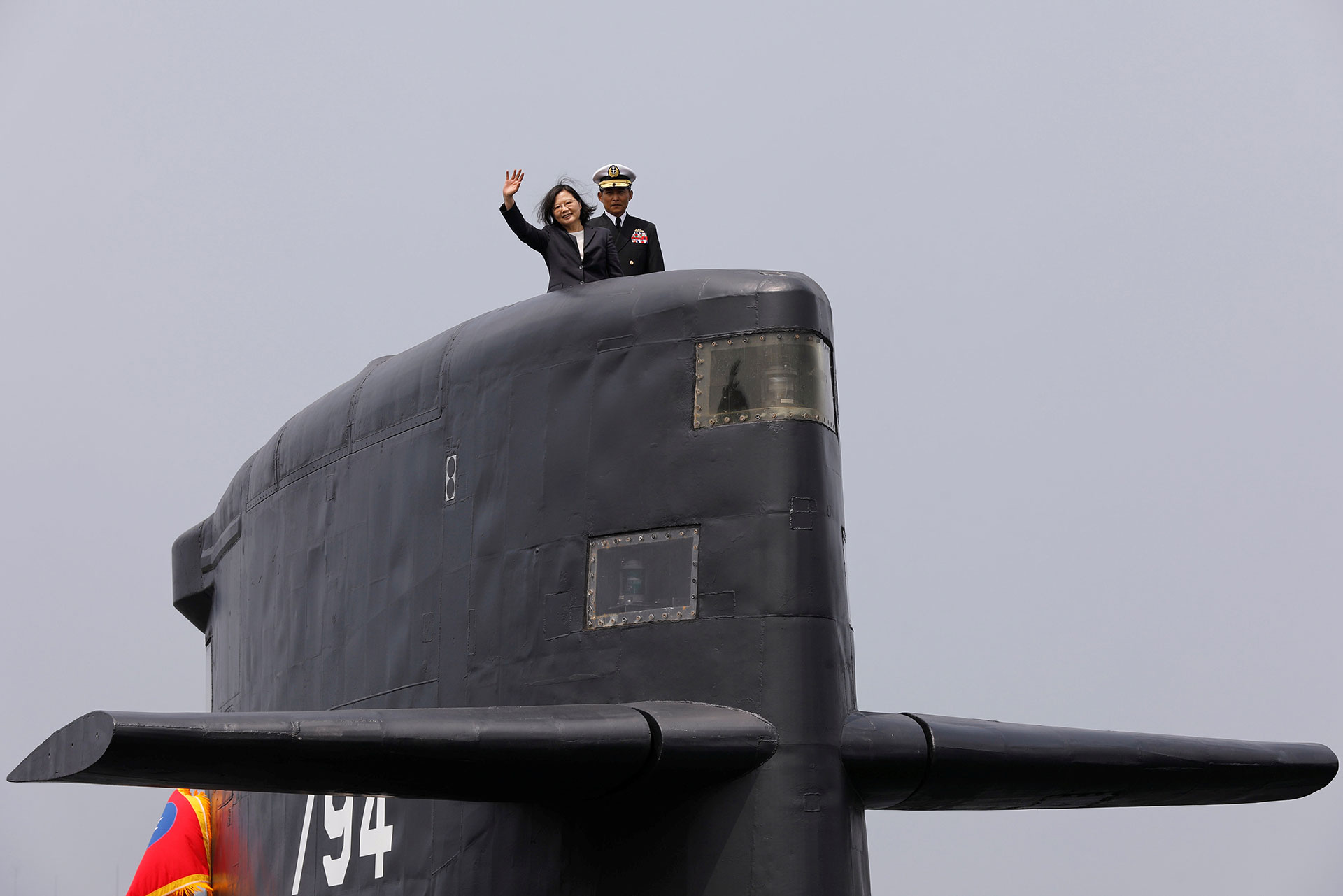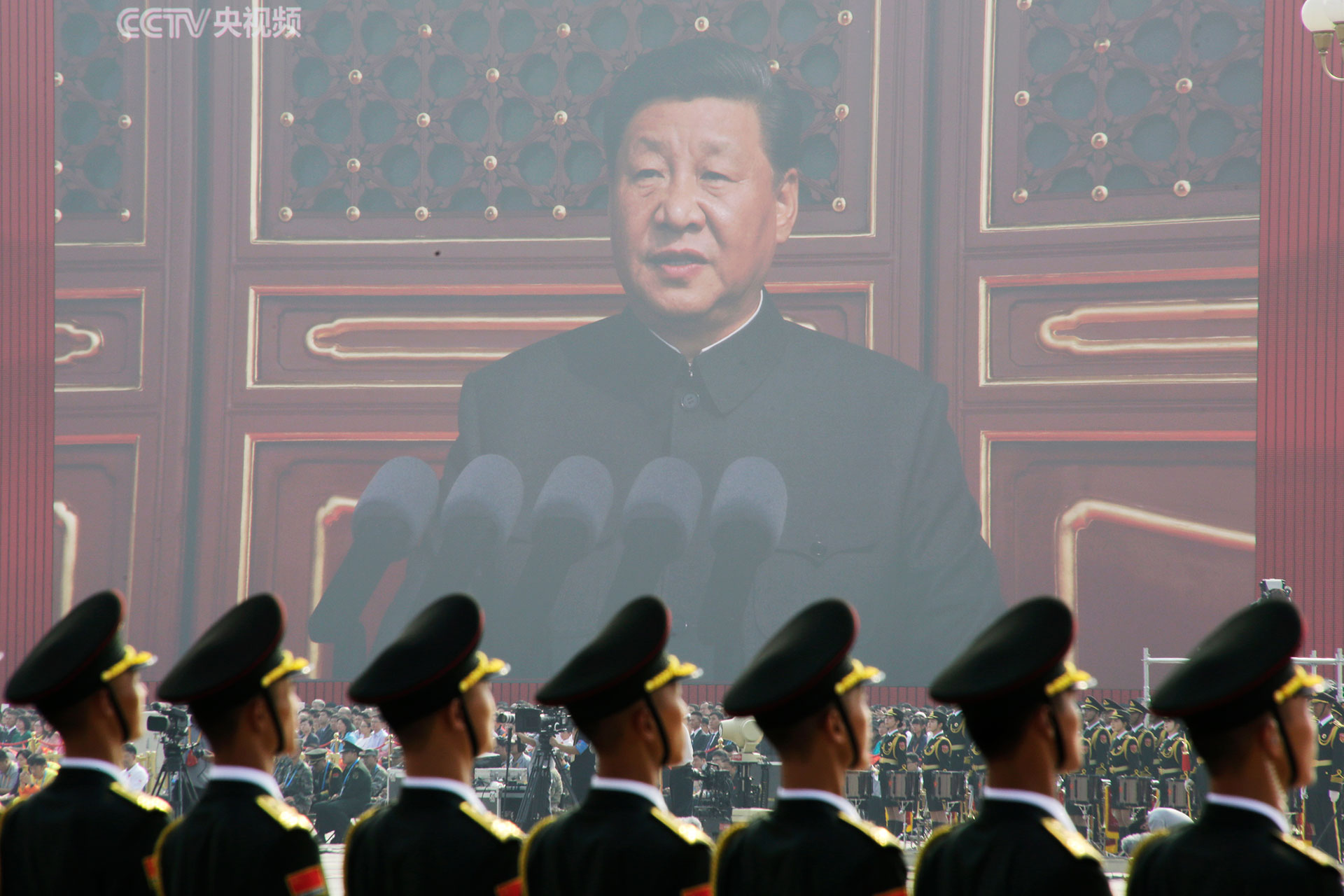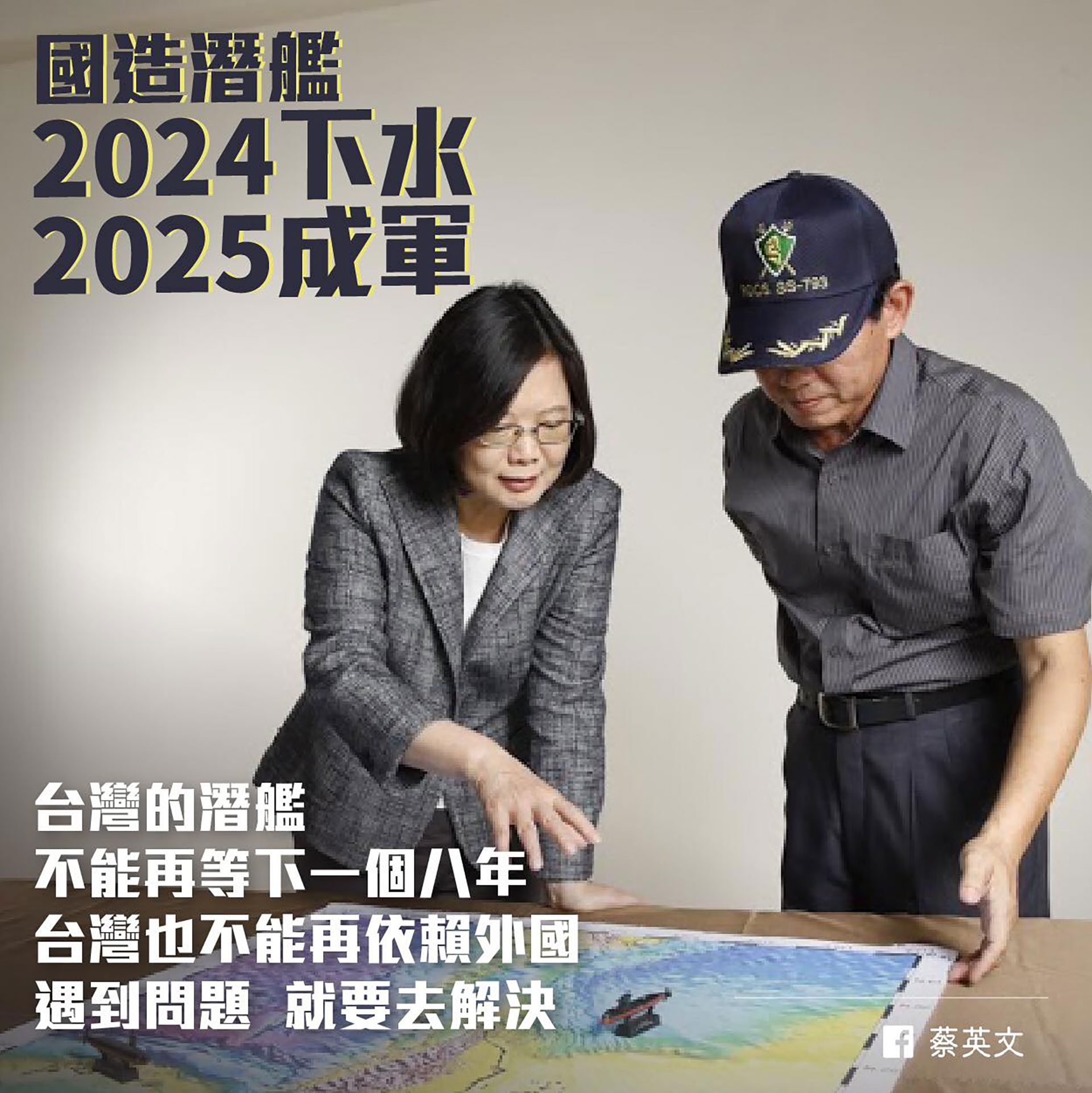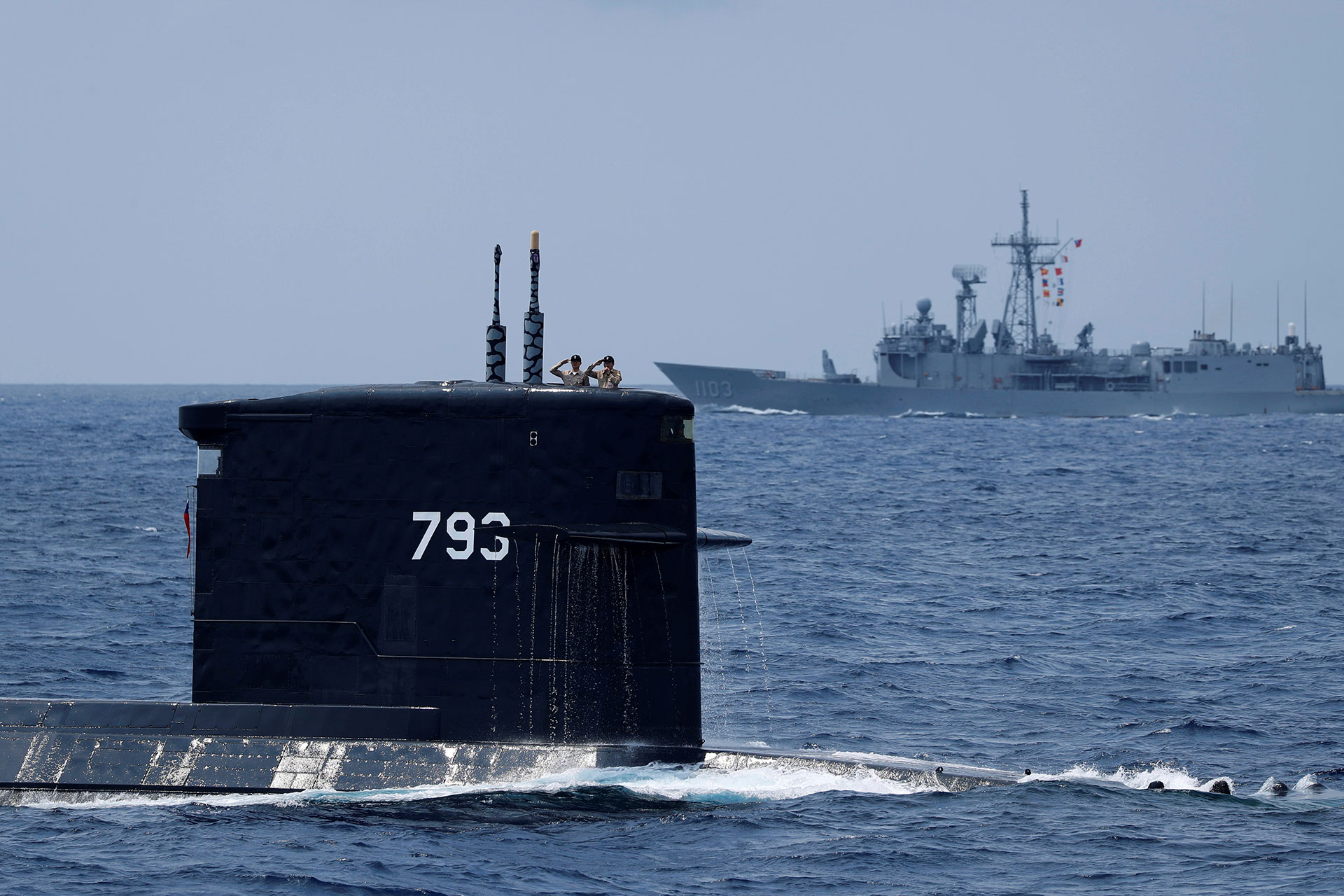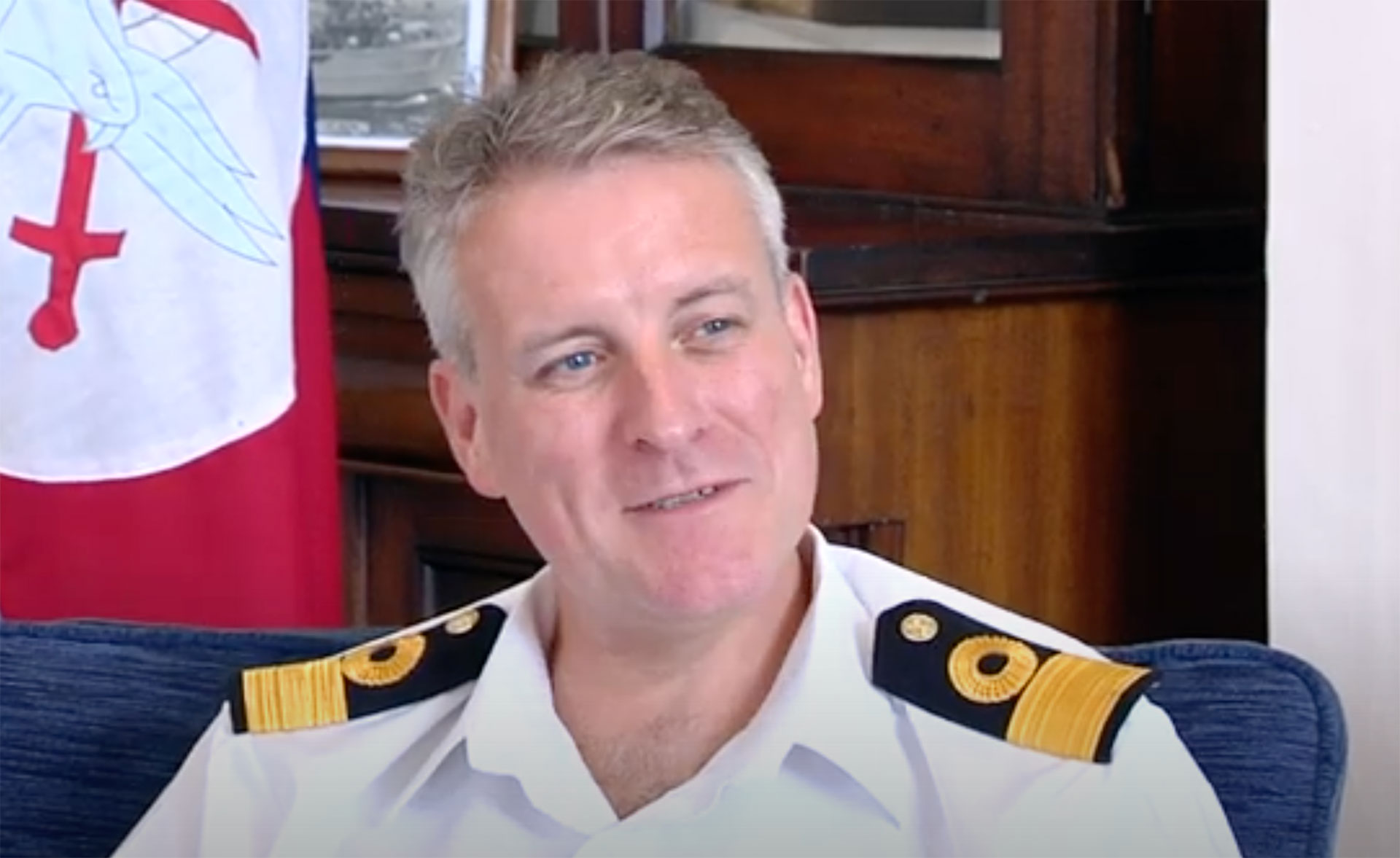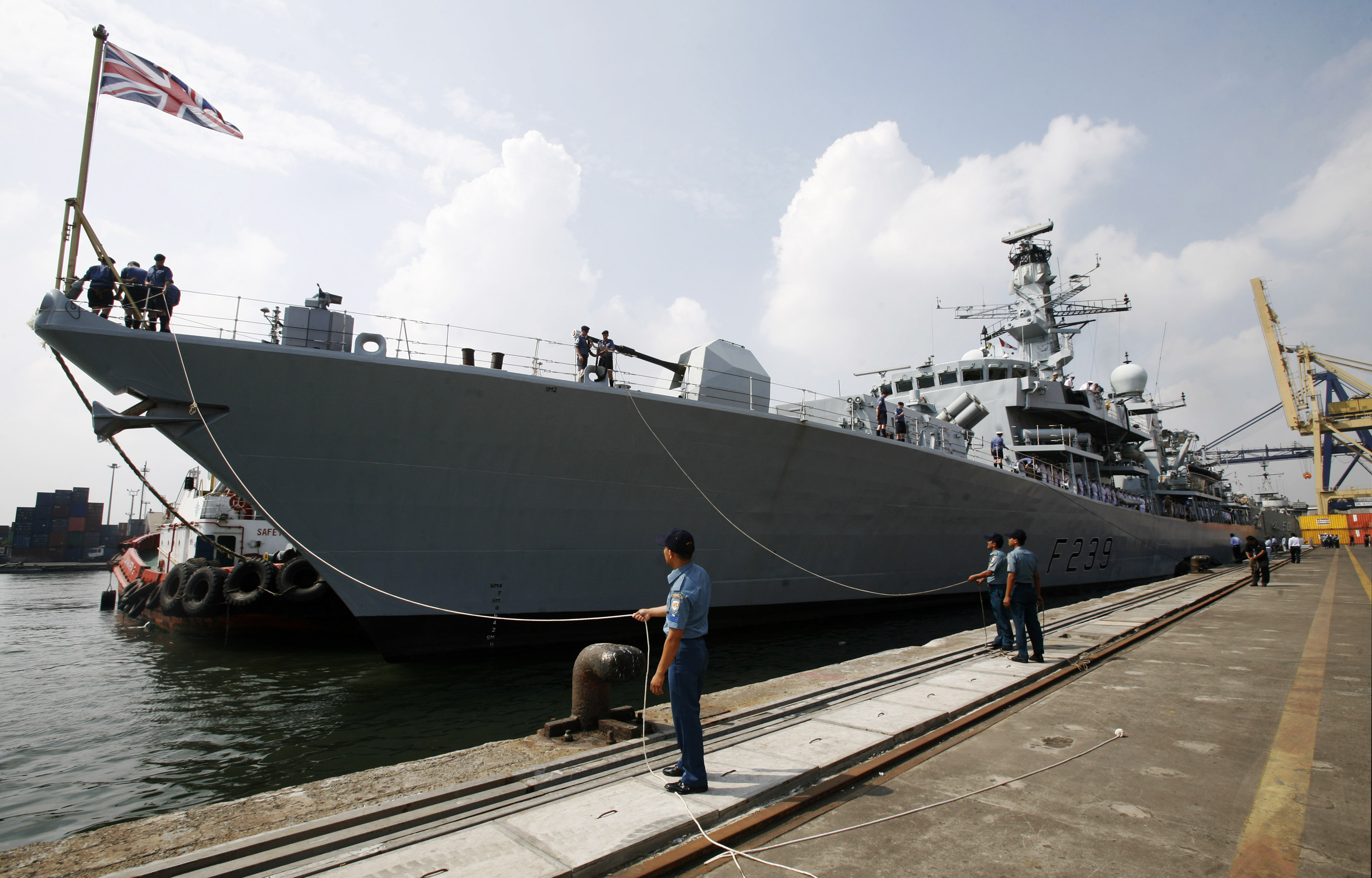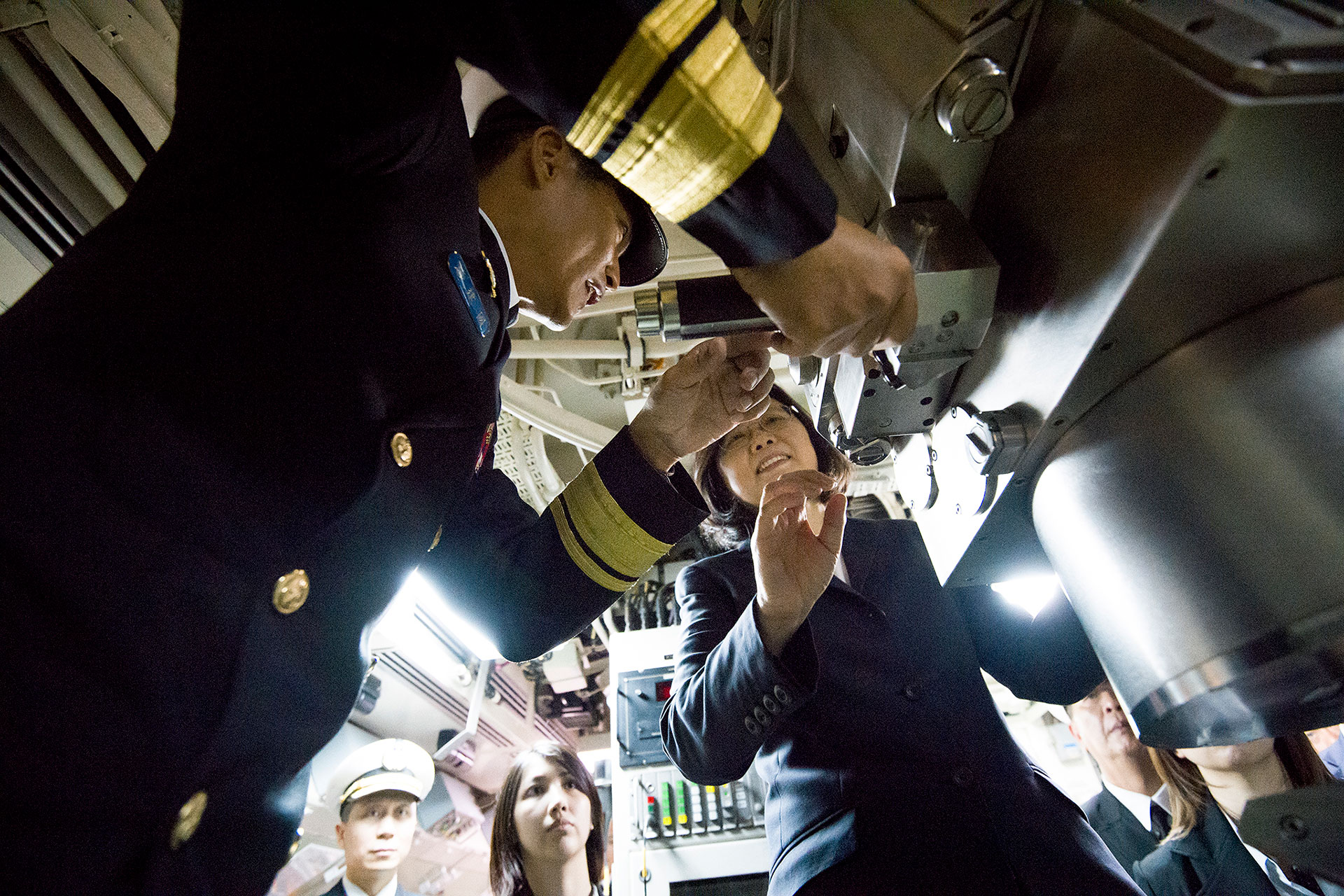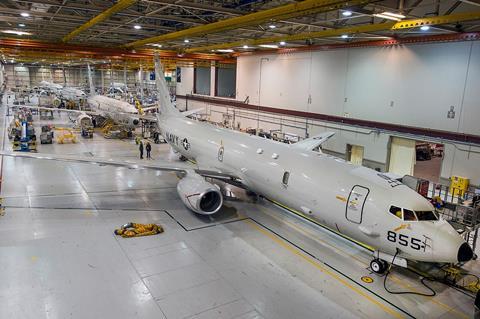May be a learning for India:
Taiwan has secretively recruited expertise and parts from at least 7 countries to build submarines to deter a Chinese invasion. Project codename: Sea Prosperity

www.reuters.com
Taiwan's friends aid stealthy submarine project as China threat rises
Nov. 29, 2021, noon GMT
For more than two decades, Taiwan tried to buy a fleet of modern conventional submarines to fend off an existential threat – invasion by China. There were no takers.
The United States, Taiwan’s main ally, has a nuclear-powered fleet and hadn’t built diesel-powered subs in decades. Other nations balked, fearful of angering Beijing.
Now, as China under President Xi Jinping steps up its military intimidation of Taiwan, an array of foreign submarine-technology vendors, with the approval of their governments, are aiding a secretive program to build subs in Taiwan. Taipei has stealthily sourced technology, components and talent from at least seven nations to help it build an underwater fleet with the potential to exact a heavy toll on any Chinese attack, a Reuters investigation has found.
Taipei’s chief foreign weapons supplier, the United States, has provided key technology, including combat-system components and sonars. But assistance is coming from far beyond America.
Defense companies from the United Kingdom, which like America operates a fleet of nuclear-powered ballistic missile and attack submarines, have provided crucial support.
A veteran of Britain’s Royal Navy submarine fleet, retired Commodore Ian McGhie, was a key figure in the drive to recruit submarine expertise, according to a person familiar with his role. McGhie helped a Gibraltar-based company hire engineers including former Royal Navy sailors, the person said.
Britain also has approved multiple export licences in the past three years for UK companies to supply submarine components, technology or software to Taiwan, according to information from the Department for International Trade obtained via a Freedom of Information request. The value of submarine technologies approved for export from the UK to Taiwan has grown exponentially in recent years, government data analyzed by Reuters shows.
Taipei also succeeded in hiring engineers, technicians and former naval officers from at least five other countries: Australia, South Korea, India, Spain and Canada. Based at a shipyard in the port city of Kaohsiung, the experts have advised the Taiwanese navy and state-backed shipbuilder CSBC Corporation Taiwan, the company building the new submarines.
President Tsai Ing-wen has been a strong supporter of the new submarine program. She boarded one of Taiwan’s existing Sea Dragon subs on a 2017 visit to Kaohsiung. The new boats are being built at a shipyard there. REUTERS/Tyrone Siu
Taiwan scoured the globe for this submarine engineering expertise, Rupert Hammond-Chambers, the president of the US-Taiwan Business Council, told Reuters.
“It’s a jigsaw,” Hammond-Chambers said. Taiwan had to search the international market for technology and components it was unable to source domestically. So, he said, it “cut down the pie to smaller pieces” to figure out which work required foreign assistance, such as help in completing the design of the submarines.
The Taiwanese project, which officially began in 2017, is formally known as the Indigenous Defense Submarine program. It is codenamed Hai Chang, which means “Sea Prosperity” in Chinese. Shipbuilder CSBC began construction last year and is aiming to deliver the first of the planned eight vessels by 2025, according to government statements. The value of the project is estimated at up to $16 billion, according to the London-based International Institute for Strategic Studies.
Informed about the findings of this article, a spokesperson for China’s foreign ministry said the Taiwanese “authorities are colluding with external forces” on the program. The countries concerned, the spokesperson said in a written statement, should refrain from participating in the submarine effort, “stop military ties with Taiwan and stop supporting the ‘Taiwan independence’ secessionist forces.”
These countries are “playing with fire, and those who play with fire will get burned themselves,” the spokesperson said.
Taiwan’s defense ministry said the new submarines are crucial for “the national defense forces’ asymmetric warfare,” a reference to waging war against a superior military foe. It added that various challenges facing the program have been “eliminated” and it is being “implemented according to plan.”
CSBC declined to comment.
Fear of reprisal
Some details of the sub project, including the involvement of a small number of foreign engineers and some tenders for equipment and expertise, have been previously reported by Reuters and others. This report provides the most detailed account yet of the program and the extent of foreign assistance Taiwan is receiving. It is based on reporting in 11 countries and interviews with more than 80 people, including current and former officials, diplomats, former submariners and defense industry sources. Reporters also analyzed corporate filings and thousands of social media postings.
Two people in Taiwan with direct knowledge of the program said project leaders devised a low-profile strategy to limit Beijing’s ability to pressure foreign governments and companies not to work with Taipei. The Taiwanese team approached foreign companies directly, rather than first requesting approval from national governments, the two people said. With orders in hand, the foreign companies then applied for export permits from their governments.
Export approvals have now been secured for all the key components, according to the two people and public statements by Taiwan officials. Many of these parts are related to the combat system, the two people said.
Still, fear of reprisal from Beijing has scuttled some transfers. A German company that provided vital equipment suddenly terminated a deal last year, according to the two people. They declined to name the firm or the technology involved. Managers from the supplier later disclosed to Taiwan that the sale was blocked by its parent company, which has extensive business interests in China.
To minimize such setbacks, the Taiwan team secured access to two or three sources of many important technologies in the event one of the suppliers pulled out, the two people said.
Taiwan’s success in securing expertise and technology reflects the West’s mounting concern over China’s expanding military might and the pressure Beijing is exerting on the island, foreign diplomats say. In September, Britain and the United States struck a deal with Australia to help Canberra build nuclear-powered subs as America and its allies respond to China’s military build-up. Two weeks later, Britain sent a warship through the Taiwan Strait for the first time since 2008.
The submarine aid is a breakthrough for isolated Taipei, which doesn’t have official diplomatic recognition from the nations that approved export permits for the project. “Taiwan isn’t really that lonely,” said one of the people in Taiwan with knowledge of the program. “Given all the export permits we managed to get, we know that many countries are helping.”
Asked about British help on the project, a UK government spokesperson said that Britain’s “longstanding policy on Taiwan has not changed: we have no diplomatic relations with Taiwan but a strong, unofficial relationship, based on dynamic commercial, educational and cultural ties.”
“The United States will continue to make available to Taiwan the defense articles and services necessary to enable Taiwan to maintain a sufficient self-defense capability,” a U.S. Department of State spokesperson said in response to questions about the program. “Doing so increases stability both across the Taiwan Strait and within the region.”
Beijing insists Taiwan is part of China and has called repeatedly for peaceful unification, but refuses to rule out using force to bring the island under its control. President Tsai Ing-wen says Taiwan is an independent country called the Republic of China, its official name, and has vowed to defend its freedom and democracy. As Chinese shipyards churn out the warships that would be required for an invasion, a fleet of modern submarines would significantly boost Taiwan’s firepower.
Deadly threat
China has 58 submarines, six of them nuclear-powered ballistic missile vessels, according to the Pentagon. Taiwan’s navy deploys just four subs. Two are World War Two vintage: U.S.-made Guppy-class submarines, in service with Taiwan since 1974, that are only fit for training. The other two are more modern: Sea Dragon-class submarines built in the Netherlands and commissioned in 1987.
The eight new submarines, plus the Sea Dragons, would pose a deadly threat to an invasion fleet, say veteran Western, Japanese and Taiwanese submariners. Armed with powerful torpedoes and anti-ship missiles, these vessels could attack the convoys of troop transports and warships that China’s military, the People’s Liberation Army (PLA), would need for any landing on Taiwan.
The two people in Taiwan with direct knowledge of the sub program said the vessels would also be deployed in the deeper waters east of the island. That would help keep open ports along Taiwan’s eastern coastline, which is furthest from China, for resupplies in a conflict.
President Xi Jinping, who has overseen a massive build-up of the Chinese military, addresses a parade in Beijing in 2019 marking the 70th anniversary of the People's Republic of China. REUTERS/Jason Lee
The subs would also exploit a weakness of the PLA navy, which analysts say still lags America and its allies in advanced anti-submarine warfare capability. The presence of subs off the Chinese coast would force China to maintain continuous anti-submarine operations. “A torpedo’s firepower is much greater than missiles or guns,” said Vice Admiral Tatsuhiko Takashima, who retired last year as commander of the Japan Maritime Self-Defense Force's submarine fleet.
Not everyone believes the submarine program is what Taiwan needs. Some strategists say Taipei should be investing primarily in smaller, cheaper but lethal weapons, such as mobile anti-aircraft and anti-ship missiles. If camouflaged and deployed in cities and mountains, these weapons could pound a PLA invasion force before it reached Taiwan.
Former Taiwan military chief Lee Hsi-ming outlined this doctrine before his retirement in 2019. Lee said the island needed to preserve the ability to strike back at an invader in the likely event of the loss of major conventional hardware such as fighter jets.
Two of China’s submarines at a military display in the South China Sea in April 2018. China has a total of 58 submarines. REUTERS/Stringer
Back in 2001, the United States agreed to supply Taiwan with conventionally powered submarines as part of a bigger arms package. But it had been decades since American shipyards built these vessels, and so Washington was unable to deliver. The U.S. submarine fleet is exclusively nuclear-powered.
Taiwan’s efforts to obtain submarines elsewhere sank as other nations feared offending China. Beijing downgraded diplomatic relations with the Dutch after the Netherlands sold Taiwan the Sea Dragons in the 1980s. To restore ties, the Dutch foreign ministry told Reuters, the Netherlands signed an agreement with China in 1984 stating it “would not approve any new exports of military goods to Taiwan.” That pact remains in place.
A turning point for the program was the election in 2016 of President Tsai, whose ruling Democratic Progressive Party champions creating a more robust military deterrent against the PLA. A ruling party research group had been studying the issue, and Tsai was determined to build new subs even before taking office, said four people with knowledge of the project.
In 2019, President Tsai Ing-wen posted a picture on Facebook of herself with Yang Yi, a retired Taiwanese submarine commander. The headline says the first of the new subs will be launched in 2024 and commissioned into service in 2025. Source: Via Facebook/Screenshot
At an important 2015 meeting, a retired submarine commander, Yang Yi, briefed Tsai on the importance of submarines, three of the people said. Reuters was unable to contact Yang. Other top navy officers, including the island’s former military chief, Admiral Huang Shu-kuang, strongly supported the project.
So, in 2017, with tension mounting in the Taiwan Strait, the defense ministry signed a memorandum of understanding with CSBC to officially begin the program to build a submarine of Taiwan’s own.
Deep secrecy
Former military chief Huang, now senior adviser on the National Security Council, gave updates to lawmakers on the project that were treated with extreme secrecy. Lawmakers had to sign a confidentiality agreement, said a person who attended the briefings. In some of the meetings, held over the past few years, navy officers brought in a model of the submarine in a cardboard box before it was revealed to the lawmakers. The model looked different each time, the person said, as the designs evolved.
In a meeting late last year, the navy presented documentation of export permits issued by foreign governments for lawmakers to review. The names of the companies were coded, and lawmakers had to consult a manual to see which firms were assisting in the program, the person said. Each time a lawmaker used the manual, their name and the page numbers they viewed were recorded.
Obstacles remain. Building a submarine from scratch is expensive and technically challenging. Taiwan has also had to contend with the refusal of established conventional submarine builders to provide a design or other assistance.
The Netherlands, for instance, has agreed to maintain the two existing Sea Dragons. But the country is not engaged in Taiwan’s new sub. Asked why, the Dutch foreign ministry said that under the 1984 agreement with Beijing, the government wouldn’t approve any new export permits for military equipment to the island.
One of Taiwan’s two Sea Dragon diesel-electric submarines, known as the Hai Lung in Chinese, emerges during a 2018 drill near Yilan naval base in the island’s northeast. REUTERS/Tyrone Siu
Tokyo, one of America’s closest allies, has also been reticent to get involved. Japan operates one of the world’s most advanced conventional submarine fleets. The idea of helping Taiwan was informally discussed in Japan but was dropped out of concern over how China might react, according to two senior defense ministry sources in Tokyo.
One reason for Japan’s hesitancy is fear of the economic consequences of offending Beijing, said retired Vice Admiral Yoji Koda, a former fleet commander of the Japanese Maritime Self-Defense Force. Japanese companies that would stand to lose business in China for helping Taiwan are a powerful lobby, Koda said.
Japan’s defense ministry declined to comment.
To keep its suppliers on board, Taiwan has proceeded quietly. Some hints of the international support have trickled out, however.
In November last year, CSBC’s chairman, Cheng Wen-lon, confirmed that foreigners had worked alongside the shipbuilder’s in-house staff to draft the blueprints. “Our staff drew the blueprint by themselves, of course, with assistance from foreign technical personnel, but we did the main body ourselves,” he said in response to questions from Taiwanese lawmakers. Cheng told legislators he was not allowed to reveal where the foreign technical assistance was coming from, however.
A facility at the shipyard in Kaohsiung where the new submarine fleet is being built by CSBC. REUTERS/Ann Wang
A proposed model of Taiwan’s indigenous submarine at a CSBC booth during a maritime and defense industry expo in Kaohsiung in 2016. The model of the vessel has evolved over time. REUTERS/Tyrone Siu
A little-known company that was incorporated in the British Overseas Territory of Gibraltar in 2013 provided a key talent pipeline. The company, Gavron Limited, headed by two Israelis, won a contract to provide technical advice to CSBC. The contract was for about T$600 million ($20 million), according to a 2018 defense ministry press release. Corporate filings list the two directors of Gavron as Gil Yossef Cooper and Arie Beizer.
Beyond the news that it secured a contract and has recruited some engineers for the project, little has been disclosed about Gavron’s role. A Gavron manager told Reuters he couldn’t answer questions without first getting permission from the client. The manager declined to make Cooper and Beizer available for interviews.
On its website, Gavron says it offers “decades of experience from consultants such as nuclear submariners ... as well as others with niche technical skills.” The company also says that “many” of its consultants were career submariners in the British Royal Navy.
This included McGhie, the former senior Royal Navy submariner who recruited engineers to work on the Taiwan project. A 2017 job ad for a submarine engineer for Gavron in Taiwan was posted on an online European job platform. It listed McGhie as the contact person.
Retired Royal Navy officers have played a key role in Taiwan’s submarine program. Former Royal Navy submarine commander Ian McGhie, seen here in a 2014 interview with Gibraltar Broadcasting Corporation, helped recruit engineers. Source: GBC
Work would include “pressure hull and major bulkhead design review,” the ad said. Both are crucial elements: The pressure hull, made of specialized steel, is the structure that keeps the submarine watertight when it submerges. It must withstand enormous forces. The bulkheads are interior structures that divide the submarine into sections to reinforce the pressure hull and allow flooded compartments to be sealed in an emergency.
Contacted by Reuters for comment, McGhie said he would need to seek permission from Gavron to talk about the project because of the sensitivity of the client and his own contractual obligations. He didn’t specifically mention Taiwan. In a follow-up email, McGhie said there were “some inconsistencies and minor inaccuracies” in this account of his and Gavron's role, but he did not elaborate. In his LinkedIn profile, he says he assisted a Gibraltar company in securing “a multi-million pound, complex technical service to a Client in the heavy industry sector in the Far East.”
McGhie was the commander of British forces in Gibraltar until 2016, according to a UK government web page. His LinkedIn profile notes that he spent 32 years in the military and was part of a team that “devised, negotiated and delivered” the UK’s first National Cyber Security Programme, a £650 million project, while he was at the Office of Cyber Security in Britain’s Cabinet Office.
A Japanese folktale
Reuters found at least 12 foreign engineers who said in interviews or on social media that they had worked on the submarine program or worked for Gavron in Taiwan.
These recruits – a mix of young and veteran submarine experts – had experience working on advanced submarine programs. These included the S-80 built by Spanish state-owned shipbuilder Navantia and Britain’s nuclear-powered Astute-class attack subs built by BAE Systems, according to the recruits’ social media profiles.
In a 2017 article posted on his university’s website, Juan Herrero Valero, a Spanish naval architect, said he started working that year for a British company in Kaohsiung on the Taiwan program. He said he was recruited for the project after being approached via LinkedIn. “I was really surprised because I’m very young,” the engineer said in the article. He noted that he was in Taiwan working with far more experienced engineers. “But the consulting team has trusted me.” He declined to speak to Reuters.
Last month, the United States disclosed with little fanfare that it would approve the sale of key technology for the project. The word came in a State Department letter to Congress dated Jan. 5, which was posted in October in the Federal Register, the official publication of U.S. government notices. Washington was prepared to license transfers of technical data and services to Taiwan, Italy and the UK valued at $50 million or more to support Taiwan's submarine project, the letter said. The technology would “support the integration, installation, operation, training, testing, maintenance, and repair of systems” supporting the program, the letter said.
Washington has kept a lid on most details, however, including which U.S. companies are involved. According to two sources in Taiwan, Lockheed Martin Corp is providing the subs’ combat system, which integrates and displays sonar and other sensor data to allow commanders to engage targets. Raytheon Technologies Corp is supplying the sonars, the sources said.
In 2018, Lockheed posted a recruitment advertisement on JobSearcher.com, an online job site, for a deputy program manager for work on Taiwan’s existing Sea Dragon submarines and the design phase of the new indigenous sub program. Candidates must have “foreign language skills in Mandarin Chinese,” the posting said. Earlier this year, Lockheed advertised on another online jobs site for a combat systems engineer for work on the Sea Dragon and the new sub.
Lockheed and Raytheon declined to comment for this story.
The aid to Taiwan is in line with longstanding U.S. policy. Since Washington switched diplomatic recognition from Taipei to Beijing in 1979, U.S. administrations have been required by law to provide Taiwan with the means to defend itself.
In late September, a British frigate sailed through the Taiwan Strait for the first time in more than a decade. The ship, the HMS Richmond, is seen here docked at a harbor in Jakarta in 2011. REUTERS/Supri
British companies also are playing a key role. In response to a freedom of information request, the UK’s Department for International Trade disclosed that 28 “applicants,” or corporate entities, had been granted licenses in the past three years to export submarine components, technology or software to Taiwan. The department didn’t specifically mention the submarine program.
The list included QinetiQ Ltd, a high-tech defense company. Three people with knowledge of the matter confirmed QinetiQ was involved in Taiwan’s program. One said the company provided advice on underwater safety management. QinetiQ declined to comment.
A Canadian subsidiary of Britain’s BMT Group Ltd has also been involved. BMT is a contractor for the UK nuclear submarine fleet. BMT Canada Ltd, the subsidiary, was hired to provide consulting and engineering advice, said four people with knowledge of the deal. This included reviewing plans drawn up by CSBC, said one of the people.
BMT Group declined to comment. Global Affairs Canada had no comment on BMT Canada’s involvement. “Canada does not maintain military-to-military or defense relations with Taiwan,” the foreign ministry said in a statement.
The value of submarine technologies and equipment approved for export from the UK to Taiwan has grown dramatically, a Reuters analysis of government data shows.
Between 2011 and 2017, Britain approved export licenses for the sale of at least £323,549 ($432,000) worth of sub equipment to Taiwan. That jumped to at least £158 million ($211 million) between 2018 and March this year. The equipment included test models and software. The UK data did not specify if the exports were for the new sub program.
As Taiwan pushes to complete the first vessel by 2025, the two people with knowledge of the program said their main concerns are delays to the import of equipment because of COVID-19 and possible pressure on suppliers by China.
For now, the multinational effort is holding. A person in Taipei with knowledge of the project likened it to the Japanese folktale Momotaro, in which a lone boy gets help from a group of unlikely allies – a dog, a monkey and a pheasant – to defeat a terrifying demon.
“We all gathered together to defeat the demon,” the person said.
President Tsai operates a periscope during a tour of one of the Sea Dragon submarines, shortly after attending a ceremony to officially launch the new sub project at a Kaohsiung port in 2017. Source: Taiwan’s Office of the President


